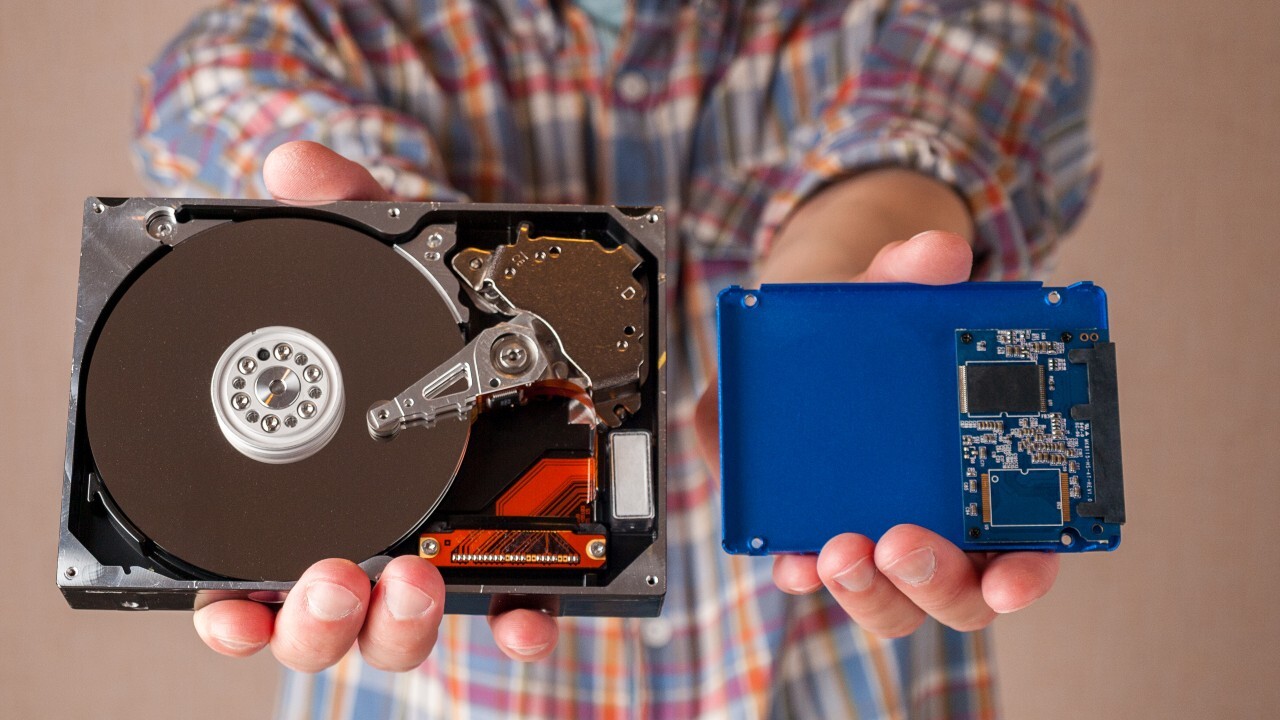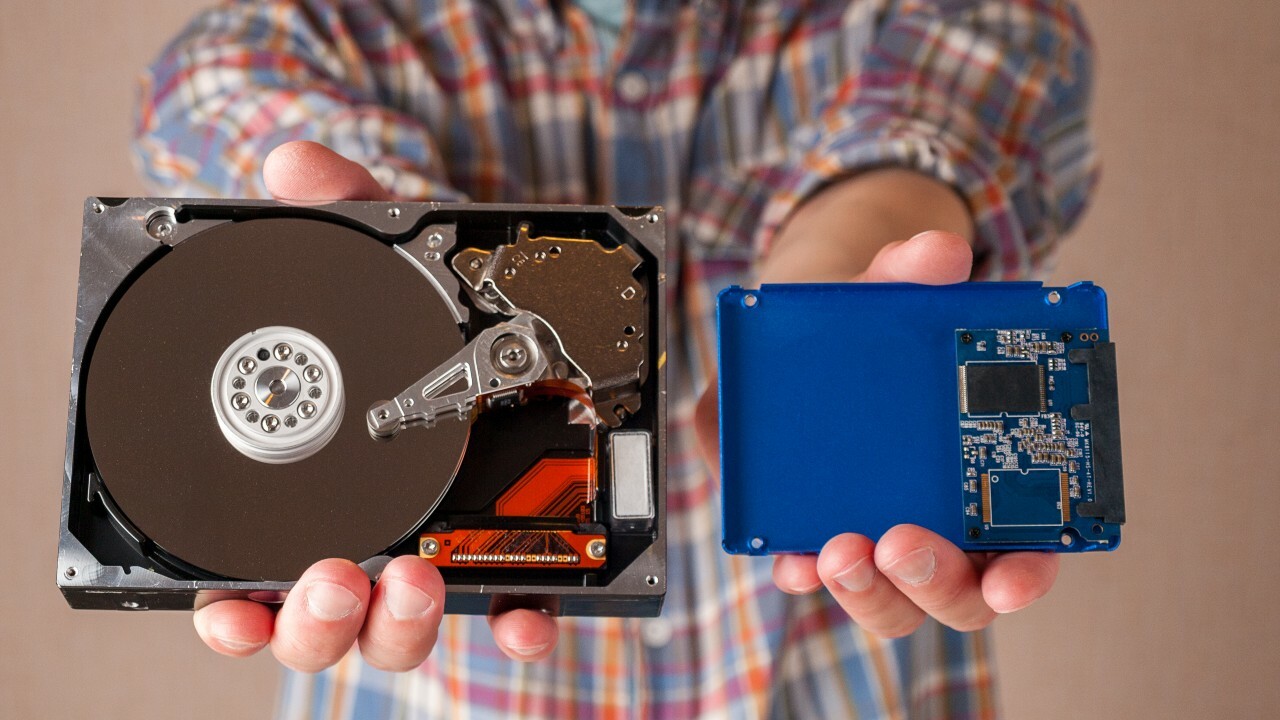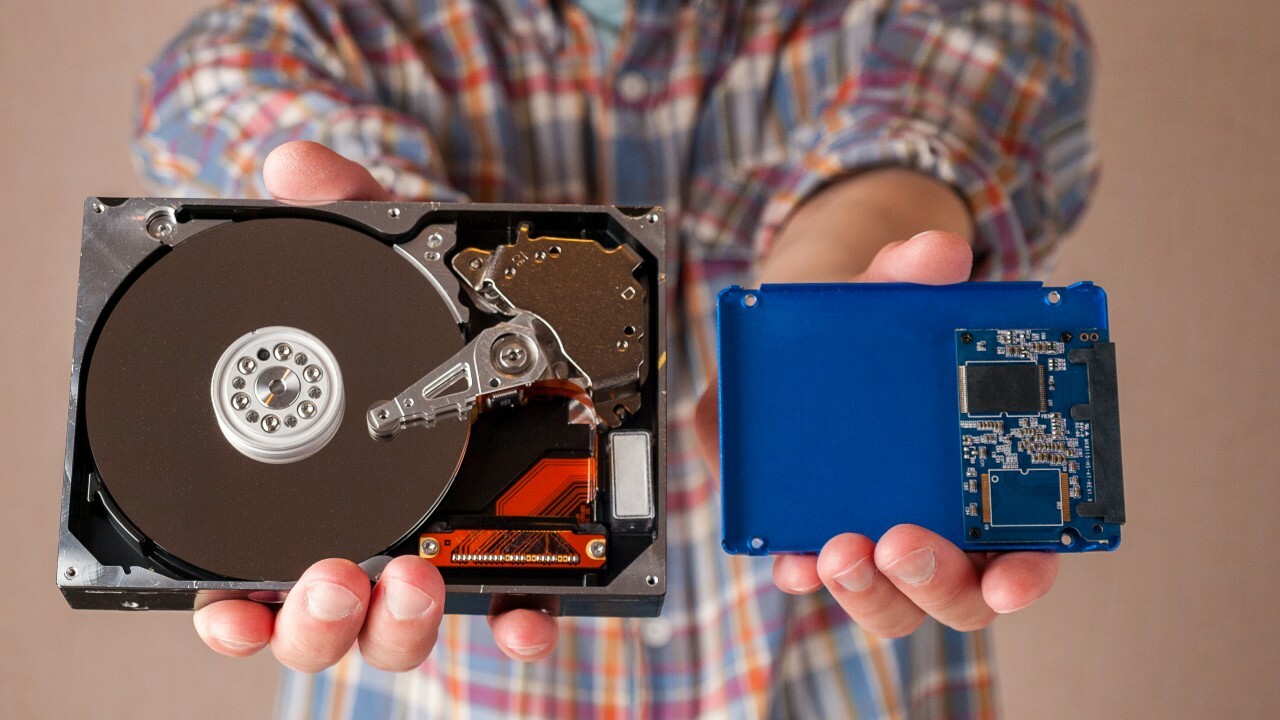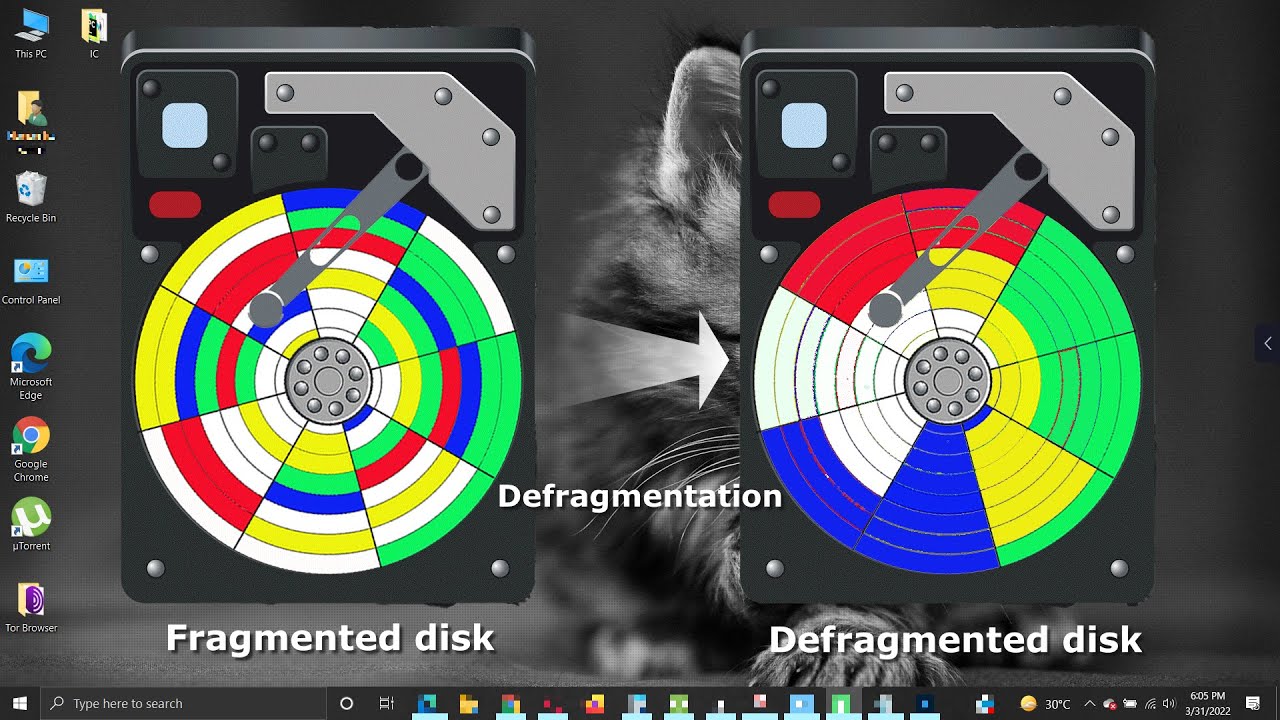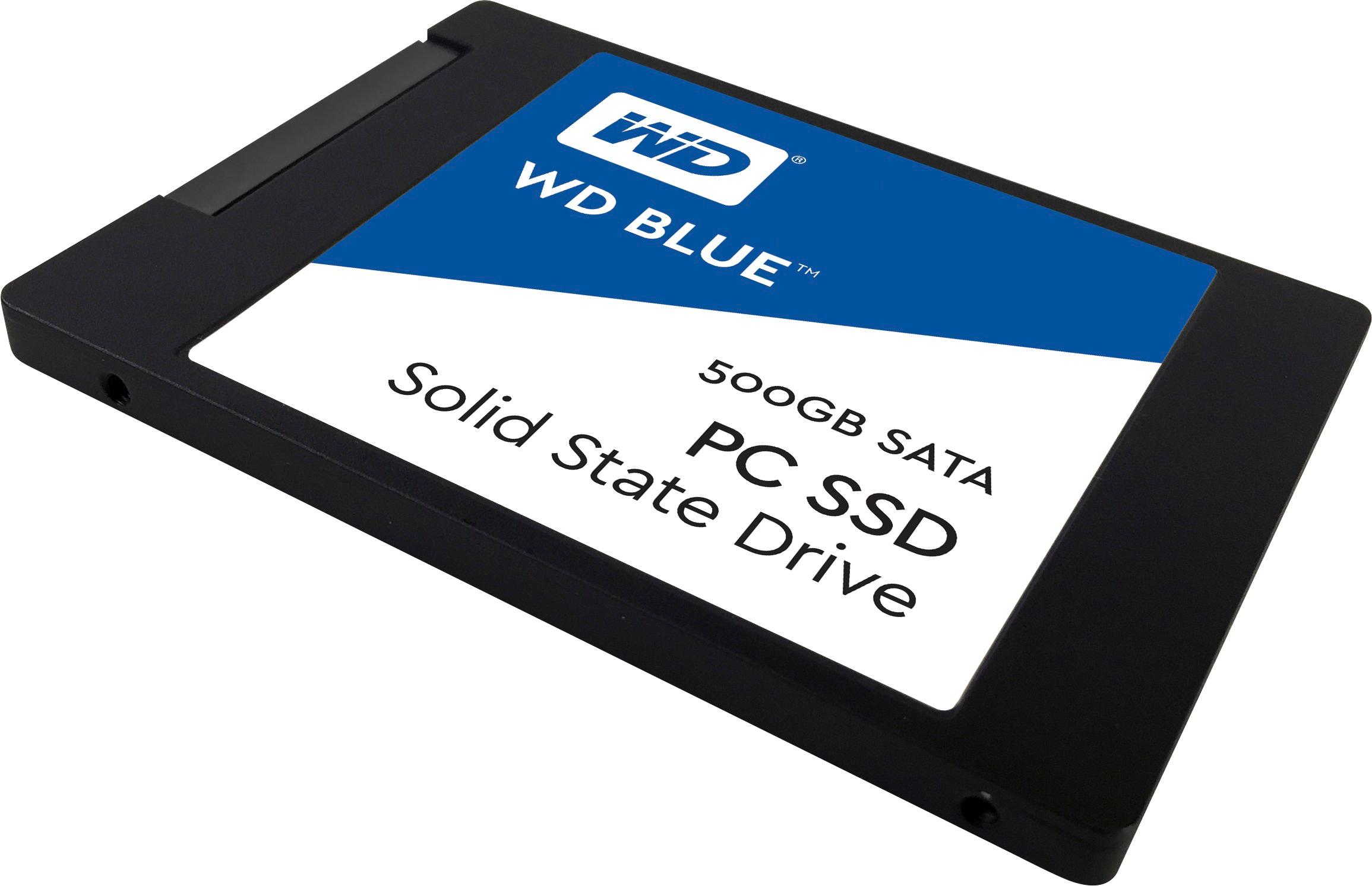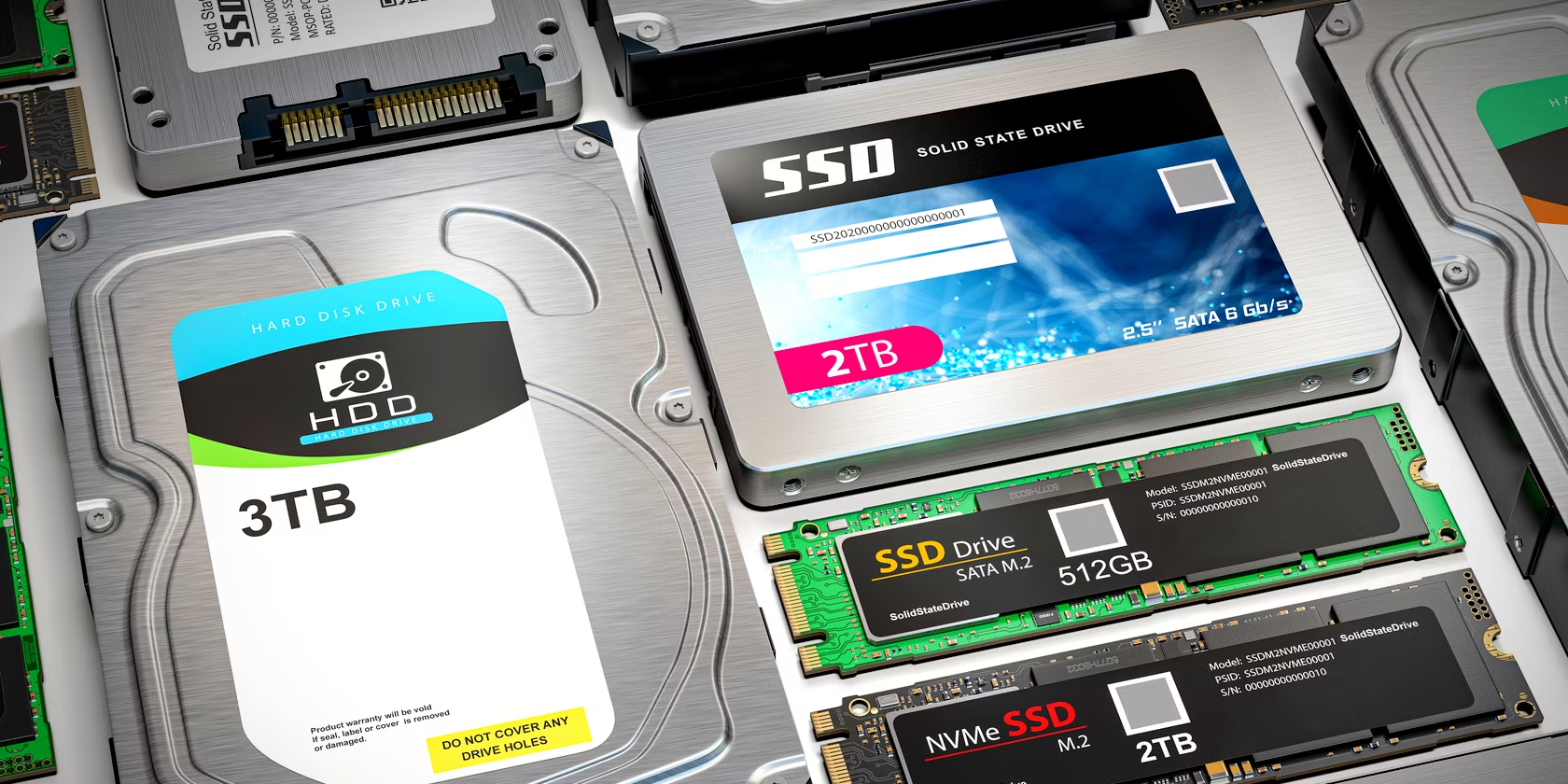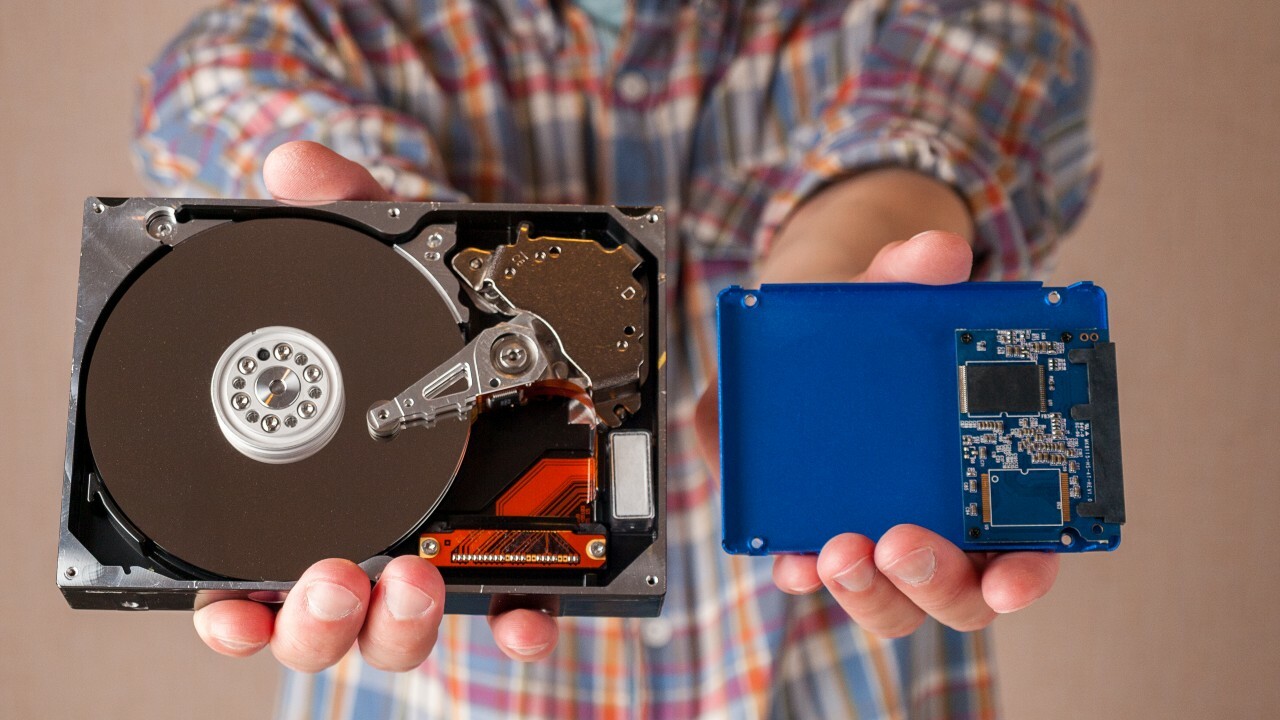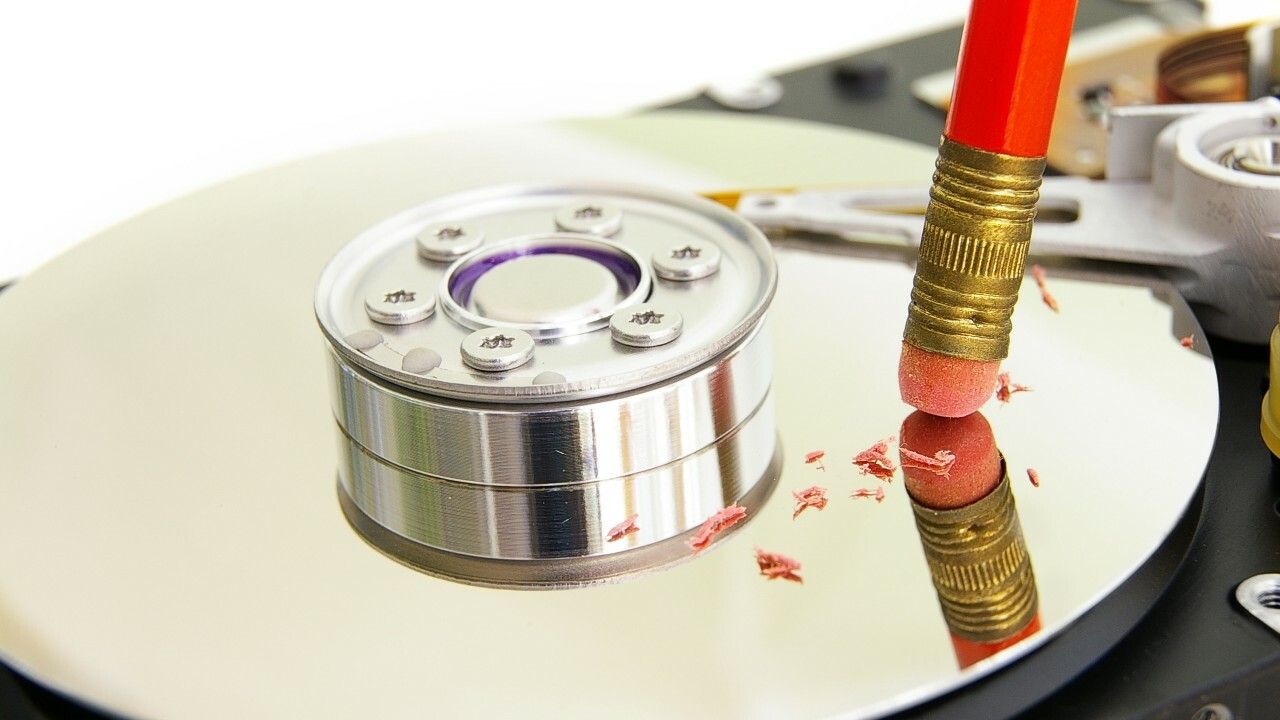Introduction
When it comes to optimizing the performance of your computer’s solid state drive (SSD), defragmentation may not be the first thing that comes to mind. Traditionally, defragmentation has been associated with mechanical hard drives, where it rearranges fragmented files to improve access times. However, with the rise of SSDs, which have a different underlying technology, the need for defragmentation seems to be a topic of debate.
So, what exactly is defragmentation? In simple terms, it is the process of reorganizing the data on your storage device to make it more efficient and improve overall performance. For mechanical hard drives, defragmentation is essential because files can become fragmented over time, resulting in slower read and write speeds. However, with SSDs, defragmentation works differently due to the way they store data.
SSDs use flash memory, which allows for faster access times and random access to data. Unlike mechanical hard drives, which physically move a read/write head to access data, SSDs store data in memory cells. When a file is deleted or modified on an SSD, the memory cells are marked as empty and ready for new data. However, when new data is written, it may not fill up the entire memory cell, resulting in fragmentation at the file system level.
While SSDs do not suffer from the same performance impact as mechanical hard drives when it comes to fragmentation, it is still beneficial to defragment them periodically. Defragmentation on an SSD mainly focuses on optimizing the location of files within the file system, rather than rearranging the actual data. This can result in improved file access times and potentially extend the lifespan of your SSD.
In this article, we will explore why defragmenting a solid state drive can be beneficial and discuss the various methods you can use to perform this optimization. Whether you are a tech enthusiast or a casual computer user, understanding how to defragment your SSD can help you maintain its performance and keep your system running smoothly.
What is defragmentation?
Defragmentation is the process of organizing and reordering the data on a storage device to improve its efficiency and performance. This optimization technique is commonly used for mechanical hard drives, but it can also apply to solid state drives (SSDs) in a slightly different way.
On traditional mechanical hard drives, defragmentation rearranges fragmented files by consolidating the scattered pieces of a file into a contiguous sequence. This helps to reduce the time it takes for the hard drive’s read/write head to access the data, resulting in faster performance. Over time, as files are modified or deleted, the data on the hard drive can become fragmented, leading to slower access times and degraded performance.
For SSDs, the need for defragmentation is less critical due to their inherent design. Unlike mechanical hard drives, SSDs do not have moving parts. Instead, they use flash memory technology to store data. When data needs to be read or written on an SSD, it can directly access any location on the drive without the need for physical movement. This random access capability provides SSDs with faster performance and eliminates the need for traditional defragmentation.
However, while SSDs do not suffer from the same fragmentation issues as mechanical hard drives, they can still experience file system-level fragmentation. When a file is modified or deleted on an SSD, the resulting empty memory cells are marked as available for new data. Over time, new data may not fill up these memory cells entirely, resulting in fragmentation at the file system level. This fragmentation can affect file access times and potentially impact the overall performance of the SSD.
Defragmentation on an SSD primarily focuses on optimizing the way files are stored within the file system. Rather than physically rearranging data like on a mechanical hard drive, the process involves reorganizing the file system’s metadata and ensuring that files are located in the most efficient manner. This can help reduce the amount of time it takes to access files and improve the overall performance of the SSD.
While defragmenting an SSD may not provide as significant of a performance boost as it does for mechanical hard drives, it can still offer some benefits. It’s important to note that modern operating systems, such as Windows 10, have built-in mechanisms that automatically handle optimization tasks for SSDs. However, if you want more control over the defragmentation process or use an older operating system, there are still some methods you can use to defragment your SSD.
Why defragment a solid state drive?
Defragmenting a solid state drive (SSD) may seem counterintuitive since SSDs have a different technology than traditional mechanical hard drives. However, there are several reasons why defragmenting an SSD can still be beneficial:
1. Improved File Access Times: While SSDs do not experience the same level of performance degradation from fragmentation as mechanical hard drives, file system-level fragmentation can still affect file access times. Defragmenting an SSD can optimize the organization and placement of files within the file system, resulting in faster access times and improved overall performance.
2. Extended SSD Lifespan: SSDs have a limited number of write cycles before the cells degrade. When files are frequently modified or fragmented, it can result in additional write operations on the SSD, potentially reducing its lifespan. Defragmentation ensures that files are stored efficiently, minimizing unnecessary write operations and extending the lifespan of your SSD.
3. Enhanced System Performance: Even though SSDs are inherently fast, optimizing their performance through defragmentation can have a noticeable impact on overall system performance. By reducing file access times, applications can load faster, data transfers can be more efficient, and system responsiveness can be improved.
4. Maintain Peak Performance: Over time, as an SSD becomes increasingly fragmented, the performance gains achieved through its fast access times can diminish. Defragmenting the SSD can help restore it to its optimal performance state, ensuring that you continue to enjoy the advantages of its high-speed storage.
5. Control over the Defragmentation Process: While modern operating systems often include automatic optimization features for SSDs, they may not provide granular control over the defragmentation process. By using third-party software or built-in Windows tools, you can have more control over when and how your SSD is defragmented, allowing you to tailor the optimization process to your specific needs.
It’s worth noting that not all SSDs may benefit from defragmentation to the same extent. Newer SSD models and advanced file systems, such as those used in modern operating systems, may already have built-in mechanisms to minimize file system fragmentation and optimize performance. However, older SSD models or specific usage scenarios where fragmentation occurs frequently can still benefit from periodic defragmentation.
By understanding the potential benefits of defragmenting an SSD and considering the specific characteristics of your drive and usage patterns, you can make an informed decision on whether to defragment your SSD and choose the most suitable method to optimize its performance.
Precautions to take before defragmenting a solid state drive
Before defragmenting a solid state drive (SSD), it’s important to be aware of certain precautions and considerations. While defragmentation can offer benefits for SSD performance, it’s crucial to follow these guidelines to ensure the safety and longevity of your SSD:
1. Check SSD Health: Before proceeding with any optimization or maintenance tasks, it’s advisable to check the health status of your SSD. Various tools and software can provide information about the health, wear level, and performance of your SSD. If the health status indicates any issues or concerns, it’s advisable to address them before attempting defragmentation.
2. Backup Important Data: While the risk of data loss during defragmentation on an SSD is relatively low compared to mechanical hard drives, it’s always a good practice to back up any critical data before proceeding with any maintenance tasks. This ensures that you have a copy of your important files in case of any unforeseen issues during the defragmentation process.
3. Disable Scheduled Optimization: Most modern operating systems, such as Windows 10, have built-in optimization mechanisms that automatically handle maintenance tasks for SSDs. Before manually defragmenting your SSD, ensure that any scheduled optimization tasks are disabled to prevent conflicts and unnecessary operations.
4. Use the Right Tools: When defragmenting an SSD, it’s crucial to use tools that are specifically designed for SSD optimization. Traditional defragmentation tools meant for mechanical hard drives may employ algorithms that are not suitable or necessary for SSDs. Utilize specialized software or built-in Windows tools that are SSD-aware and apply appropriate optimization techniques.
5. Update Firmware and Drivers: Keeping your SSD’s firmware and drivers up to date is essential for overall performance and compatibility. Before defragmentation, ensure that you have the latest firmware and drivers installed. Manufacturers often release updates that include performance enhancements and bug fixes, which can positively impact SSD performance.
6. Monitor Temperature and Overheating: During defragmentation, SSDs may generate additional heat. It’s important to monitor the temperature of your SSD during the process to prevent overheating. If the temperature starts to rise significantly, pause the defragmentation and allow the SSD to cool down before continuing.
7. Avoid Excessive Defragmentation: Unlike mechanical hard drives, SSDs have a limited number of write cycles before they degrade. Excessive defragmentation can contribute to unnecessary write operations, potentially reducing the lifespan of your SSD. It’s recommended to defragment your SSD periodically rather than excessively or unnecessarily.
8. Follow Manufacturer’s Guidelines: Lastly, refer to your SSD manufacturer’s guidelines and recommendations regarding defragmentation. Different SSD models may have specific instructions or considerations to follow for optimal performance and longevity. Consulting the manufacturer’s documentation or their official website can provide valuable information and best practices.
By taking these precautions and considering the specific characteristics of your SSD, you can defragment your solid state drive safely and effectively optimize its performance, ensuring a long-lasting and smooth computing experience.
Method 1: Utilize built-in Windows tools
If you’re using a Windows operating system, you have access to built-in tools that can help you defragment your solid state drive (SSD) effectively. Windows provides a couple of options that are specifically designed to optimize SSD performance:
1. Windows Optimize Drives: The Windows Optimize Drives tool, formerly known as Disk Defragmenter, is the built-in utility for optimizing both mechanical hard drives and SSDs. This tool is aware of the differences between the two types of storage devices and automatically adjusts the optimization method accordingly.
To access the Windows Optimize Drives tool, follow these steps:
- Open the Start menu and type “Defragment and Optimize Drives” in the search bar.
- Click on the search result to open the Optimize Drives window.
- Select your SSD from the list of drives.
- Click on the “Optimize” button to initiate the optimization process.
This tool will analyze your SSD and determine if optimization is needed. If the SSD is already optimized or if it’s not recommended to defragment it, the tool will inform you accordingly. Windows automatically runs this optimization process on a scheduled basis, but you can manually run it whenever you prefer.
2. Storage Sense: Storage Sense is another feature introduced in Windows 10 that helps manage storage space and automatically optimize drives, including SSDs. It monitors your system’s storage and performs routine maintenance tasks in the background to maintain optimal performance.
You can enable Storage Sense by following these steps:
- Open the Start menu and go to “Settings”.
- Click on “System” and then select “Storage” from the left sidebar.
- Scroll down and toggle on the “Storage Sense” option.
By default, Storage Sense will run its optimization tasks on a regular basis. However, you can customize the settings by clicking on “Configure Storage Sense or run it now”. From there, you can choose the frequency and specific tasks Storage Sense should perform, including the optimization of SSDs.
Utilizing these built-in Windows tools provides a convenient and straightforward way to defragment your SSD. Windows is designed to handle the optimization process in a safe and efficient manner, taking into account the unique characteristics of SSDs to enhance performance and longevity.
It’s worth noting that the exact steps and available options may vary depending on the version of Windows you are using. Always refer to the official Microsoft documentation or support resources for the most up-to-date instructions pertaining to your specific operating system version.
Method 2: Use third-party software
In addition to the built-in Windows tools, you can also consider utilizing third-party software to defragment your solid state drive (SSD). These software options often provide more advanced features and customization options for optimizing your SSD performance. Here are a few popular third-party defragmentation tools:
1. O&O Defrag: O&O Defrag is a comprehensive defragmentation tool that offers specific optimization techniques for both mechanical hard drives and SSDs. It utilizes algorithms designed to minimize unnecessary write operations on SSDs while efficiently reorganizing the file system. O&O Defrag provides options for scheduled defragmentation, automatic background optimization, and detailed SSD health monitoring.
2. Auslogics Disk Defrag: Auslogics Disk Defrag is another widely used defragmentation software that supports SSD optimization. It offers a user-friendly interface with various defragmentation modes suitable for different SSD types and usage scenarios. Auslogics Disk Defrag allows you to customize the optimization process, schedule automatic defragmentation, and perform SSD health checks.
3. Defraggler: Defraggler, developed by Piriform, is a popular defragmentation tool that includes SSD optimization capabilities. It provides a straightforward interface and allows you to selectively defragment individual files, folders, or entire drives. Defraggler also offers real-time drive monitoring, advanced scheduling options, and detailed SSD health analysis.
Before choosing a third-party defragmentation software, it’s important to research and evaluate the features, reputation, and compatibility with your SSD and operating system. Keep in mind that while these tools provide advanced optimization options, you should always use SSD-specific defragmentation settings, as the traditional defragmentation methods meant for mechanical hard drives may not be suitable for SSDs.
When using third-party software, consider the following:
1. Read User Reviews and Ratings: Look for feedback from other users to gauge the performance, reliability, and user experience of the software. Online forums, review websites, and reputable software download platforms can provide valuable insights.
2. Compare Features and Options: Evaluate the specific features and customization options offered by each software. Look for SSD-specific optimization algorithms, scheduling capabilities, and any additional functionality that may enhance the defragmentation process.
3. Check for SSD-specific Settings: Ensure that the software has specific settings tailored for SSD optimization. Look for options to minimize write operations, analyze SSD health, and provide real-time monitoring of temperatures and performance statistics.
4. Keep Software Updated: Regularly check for software updates, as developers frequently release new versions with bug fixes, performance enhancements, and compatibility improvements. Updated software will ensure that you have the latest features and optimizations for your SSD.
Using third-party software provides additional flexibility and control over the optimization process, allowing you to customize the settings according to your specific needs. However, it’s important to choose reputable software from trusted sources and follow the software’s guidelines to optimize your SSD effectively.
Method 3: Optimize and trim the solid state drive
In addition to traditional defragmentation methods, optimizing and trimming your solid state drive (SSD) can also contribute to improved performance and longevity. Unlike mechanical hard drives, SSDs require different maintenance techniques due to their unique architecture. Here are some methods to optimize and trim your SSD:
1. Enable TRIM: TRIM is a command that helps maintain SSD performance by allowing the operating system to inform the SSD which blocks of data are no longer in use. This enables the SSD to proactively free up space and optimize its storage. TRIM helps prevent the SSD from wasting resources by continually erasing unnecessary data. Most modern operating systems, including Windows, Mac OS, and Linux, enable TRIM by default for SSDs. However, it’s essential to verify that TRIM is enabled on your system to ensure proper SSD optimization.
2. Update Firmware: SSD manufacturers periodically release firmware updates to enhance performance, improve compatibility, and address any potential issues. It’s crucial to check for and install firmware updates provided by the SSD manufacturer. Updated firmware can optimize SSD performance and introduce new features that contribute to a more efficient SSD operation.
3. Disable Indexing: By default, operating systems index files on storage devices to enhance search functionality. However, SSDs perform exceptionally well with random access, rendering indexing less necessary. Disabling indexing on your SSD can reduce unnecessary write operations and improve overall SSD performance. To disable indexing, navigate to the drive properties in your operating system settings and deselect the “Allow files on this drive to have contents indexed” option.
4. Disable Prefetch and Superfetch: Prefetch and Superfetch are features in Windows that analyze and cache data to optimize application launch and system performance. While these features can be helpful for mechanical hard drives, they are less beneficial for SSDs. Disabling Prefetch and Superfetch can reduce unnecessary read and write operations on your SSD, ensuring that its performance is optimized for random access.
5. Limit Disk Space Usage: Keeping a reasonable amount of free space on your SSD is essential for optimal performance. SSDs require free space to perform wear-leveling and garbage collection, which helps extend their lifespan and maintain consistent performance. Avoid filling your SSD to its maximum capacity, and aim to keep at least 10-20% of the drive free for efficient operation.
6. Optimize Drive Usage: Consider the way you use your SSD to minimize unnecessary write operations. For example, avoid excessive file downloads, frequent large file transfers, and excessive installation and uninstallation of applications on your SSD. By being mindful of your drive usage, you can help reduce wear on the SSD and extend its lifespan.
7. Regularly Check SSD Health: Monitoring the health of your SSD is important to identify any potential issues. Various SSD health monitoring software applications are available that can provide information regarding the health, lifespan, and performance of your SSD. Regularly check your SSD’s health status and take necessary actions if any potential issues arise.
Optimizing and trimming your SSD will help maintain its performance and overall longevity. By enabling TRIM, updating firmware, disabling unnecessary features, managing disk space, and monitoring the health of your SSD, you can ensure that it operates at its best. These optimization techniques, coupled with regular maintenance, will contribute to a smooth and efficient SSD experience.
Conclusion
Defragmenting a solid state drive (SSD) may not be the same as with traditional mechanical hard drives, but it can still offer benefits in terms of performance optimization and longevity. While SSDs handle data differently, file system-level fragmentation and inefficient storage can affect their performance. By incorporating defragmentation techniques specifically designed for SSDs, you can enhance their efficiency and maintain their peak performance.
We explored various methods to defragment an SSD, including utilizing built-in Windows tools like Optimize Drives and Storage Sense. These tools are aware of SSD technology and provide automatic optimization without the need for manual intervention. Additionally, we discussed the use of third-party software such as O&O Defrag, Auslogics Disk Defrag, and Defraggler, which offer more advanced features and customization options.
Optimizing and trimming your SSD through enabling TRIM, updating firmware, disabling unnecessary features, managing disk space, and monitoring SSD health are also crucial steps to maintain its performance and longevity. These techniques reduce unnecessary write operations, optimize storage efficiency, and ensure that SSDs operate at their best.
It’s essential to take precautions before defragmenting an SSD, such as checking its health, backing up important data, and disabling scheduled optimization tasks. Following manufacturer’s guidelines, using the right tools, and monitoring temperature and overheating during the defragmentation process are also important considerations.
By implementing these methods and practices, you can ensure that your SSD operates optimally, delivering faster file access times, enhanced system performance, and potentially extending its lifespan. Remember to stay updated with the latest firmware, regularly check SSD health, and monitor the usage and disk space to maintain an efficient and reliable SSD.
Whether you choose to utilize built-in Windows tools or opt for third-party software, the key is to be mindful of SSD-specific optimization techniques. By doing so, you can make the most out of your solid state drive, ensuring a smooth and efficient computing experience.







